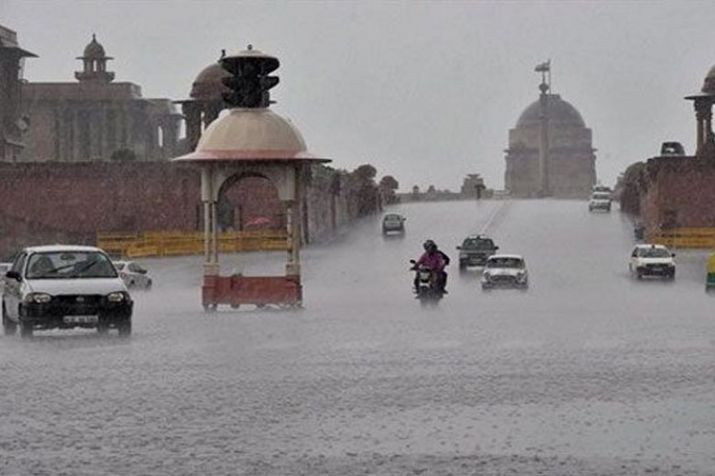The National Capital got relief from the heatwave on Monday evening when heavy rains and an intense hailstorm lashed several parts of Delhi-NCR. According to the officials, wind speeds reached almost 100 km/hour.
Although the temperature dropped after the shower, the gusty winds caused havoc in the national capital. The trail of damage across Delhi includes the uprooting of around 500 trees and poles, significantly damaging vehicles and properties, blocking roads and disrupting traffic at several sites and causing two deaths.
RK Jenamani, a scientist with the India Meteorological Department, observes that the damaging effects of the thunderstorm were most evident over the Central and East Delhi regions.
He further added, “the passing thunderclouds brought intense shower in a very small time, during which wind speeds were reportedly touching a speed of 100km/ hour at Safdarjung. It touched a speed of around 70km/hour at Palam. The influence of this western disturbance, which is bringing moisture-laden easterly winds towards Delhi.” (HT)
Furthermore, the flight operations at Delhi Airport were affected by the heavy rain and gusty wind on Monday evening. The Airport Authorities have warned travelers to keep a check on the status of flights as air traffic has been affected due to the adverse weather conditions.
The historic Jama Masjid of Delhi suffered consequential damage to its central dome.
The Shahi Imam, Ahmad Bukhari told PTI that, “the finial of the main dome fell off. It needs urgent repair to prevent further damage. Some stones of the mosque structure also loosened and fell off. I will write to the Prime Minister for immediate repair of the mosque roping in the Archaeological Survey of India.”
Why are stormy showers becoming more frequent?
Climate scientists and environmentalists around the globe expect that the more extreme the atmosphere, the more moisture it can hold, which ultimately results in stormy rain.
Therefore, these widespread changes in weather patterns are linked with the average rise in global temperature.
We’ve seen heat waves become more frequent and longer-lasting in the United States over the past few years, and the South Asian subcontinent is currently experiencing scorching heat. For at least a decade, India has been battling devastating floods and landslides in the aftermath of stormy rain.
Actions
The Intergovernmental Panel on Climate Change (IPCC), in its latest report gives an updated global assessment of climate change mitigation progress and pledges, and examines the sources of global emissions. It elaborates developments in emission reduction and mitigation efforts, assessing the impact of national climate pledges in relation to long-term emission goals.

